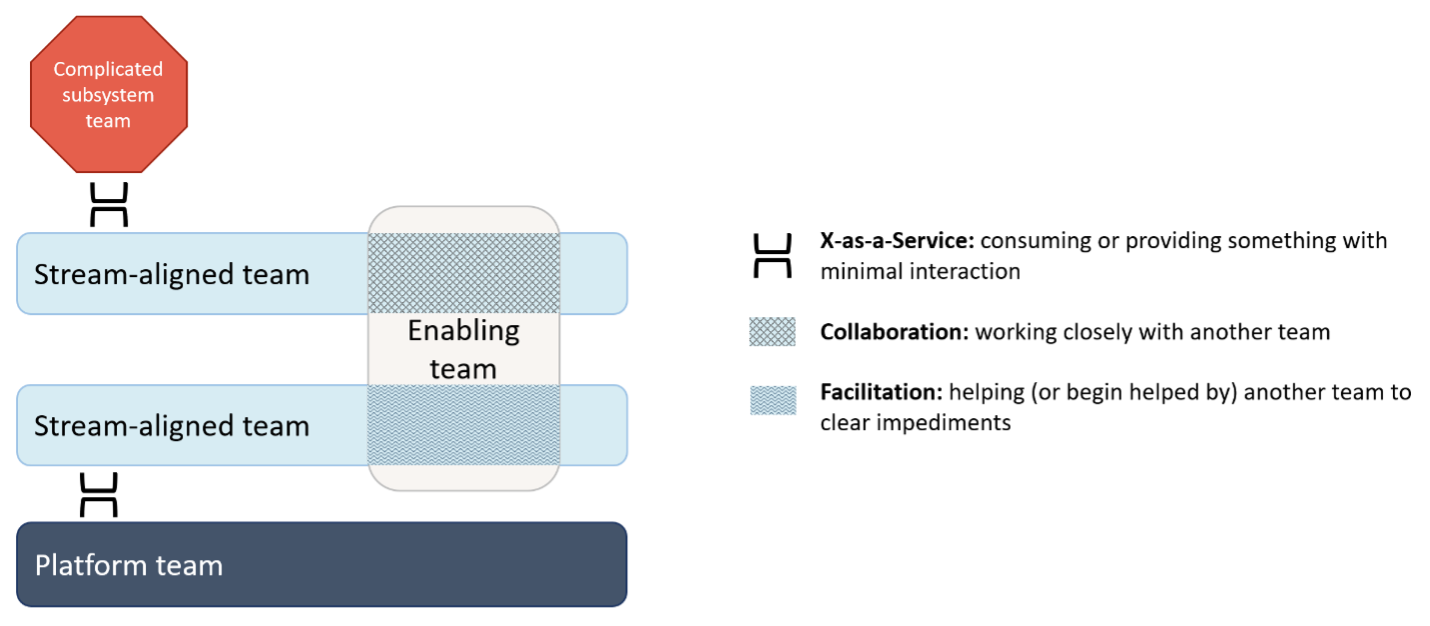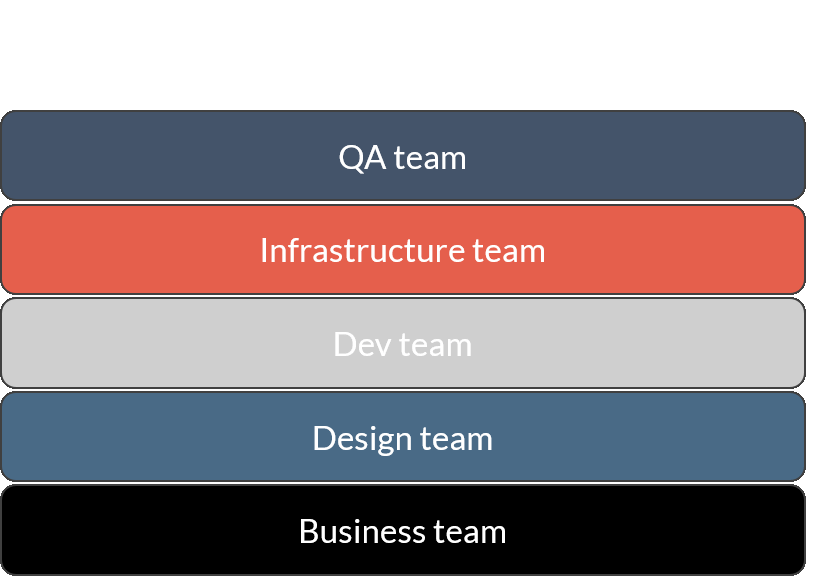Transformation
Jul 23, 2021
A CIO’s Guide to IT Organizational Transformation Part 2: Stream-Aligned Teams, Fracture Planes, and Reducing Cognitive Load

Imagine a soccer team takes the field. But instead of a goalie, defenders, midfield, and strikers, they only send out 11 strikers. After the first quarter, they hand it off to 11 goalies. In the second half there’s another handoff, first to midfielders and finally to defenders. What are their odds of success?
Sadly, that’s how software development has been done for too long. Siloed teams working for weeks before handing off the work to another team of a different skillset. It’s designed in a silo, developed in a silo, and tested in a silo. There’s little context given between teams and few understand the final business outcome the functionality is designed to accomplish. When a change is needed, things start all over. The result is a game of telephone with many handoffs and high cost of change. It’s intra-team waterfall.
It’s for these reasons that software development has migrated to cross-functional teams: One multi-disciplinary team aligned on one purpose which is empowered to operate (and deploy) independent of other teams.
Popularized as “stream-aligned teams” by Matthew Skelton and Manuel Pais in Team Topologies: Organizing Business and Technology Teams for Fast Flow, they form the backbone of the modern technology organization. They are purpose-built to move fast, building just what their customer needs. Leveraging the build-measure-learn feedback loop of a lean startup, each can operate with the agility of a small organization backed by the resources of a large organization. By de-coupling the teams, the benefits of both sizes can be realized.
Supporting these teams are platform teams (internal-facing responsibilities and products), enabling teams (deep domain knowledge on a topic), and complicated sub-system teams (experts in a particularly complex bit of the ecosystem). As all teams work together, organizations achieve the streamlined value they seek.

Figure 1: Team types and communications modes
But how do you migrate from having 11 goalies on a team to a blending of skillsets around a unique vision? Stream-aligned teams could be formed around a single product service, a single set of features, a single user journey, or a single user persona, each of which may require designers, developers, business, and testers. In this blog, we will discuss how enterprises can achieve continuous delivery, or fast flow, by making the transition to more stream-aligned teams.
How Do You Break the Existing Organizational Structure Without Breaking the Organization?
Migrating from your existing organizational structure to the conceptual promised land can be fraught with risks and pitfalls. Failure could taint the effort and concepts for years to come, further entrenching the existing, inefficient ways of working.
How can a large-scale organization manage risks while pivoting efficiently? There are three steps we’ve seen be successful with our clients and friends.
Step 1: Focus on the Shadow IT Organization
Begin by finding the winning shadow IT organization. Is there a part of the business that is already operating this way, perhaps without fully realizing it or telling others? You may need to poke around a bit and ask the right questions. Finding a group that’s already trying to work this way and empowering them as early adopters can be a big win for driving larger adoption.
Step 2: Laser in on Fracture Planes
This type of org change will need to start small and grow. Fracture planes may be a specific service, product, or user persona which lend itself to be easily split from the existing organizational structure. Consider integrations and dependencies, infrastructure location, and team skillsets to identify these fracture planes.
Step 3: Label Your Communication Types
Once you’ve identified some fracture planes, consider what communication method each would leverage. In Team Topologies, Skelton and Pais describe three types of team communication:
X-as-a-service: Consuming or providing something with minimal collaboration.
Collaboration: Working closely together with another team.
Facilitating: Helping (or being helped by) another team to clear impediments.
What Does Leveraging Fracture Planes Really Look Like in an Organization?
To begin migrating to a new model, work to identify those pieces which could operate in an X-as-a-service mode where the internals of the system are decoupled from other teams, engaging only through the interface.
One example may be payments. Before, any changes to payments had to be passed from business to designers, development, quality assurance, and maybe even an infrastructure team. Instead, create a payments stream-aligned team composed of all the necessary roles to make payments happen. Now, anytime a payments-related requirement comes through, it can be routed to the payments team. They offer payments-as-a-service.

Figure 2: Org changes as stream-aligned teams form
Before moving on to other parts of the organization or product, seek feedback from those within and external to the pilot group and incorporate those lessons into future efforts.
What Is the Power of Creating Fracture Planes?
Part of the magic of this approach should now be clear. By providing payments-as-a-service to your organization, no one else needs to know how payments work.
You’ve reduced the cognitive load of everyone else in the organization by clearly delineating roles and responsibilities, freeing them up to focus on the remaining duties. Over time, as you create more stream-aligned teams, each person’s cognitive load reduces, allowing them to not only move faster because they’re teamed up with the necessary supporting roles but because they don’t have to know every other part of the business.
Keep in mind, you’ll need to get buy-in from not just senior stakeholders but from key practitioners and cultural influencers. This impacts how people work and who they work with. Follow best practices of change management and nemawashi—the informal process of laying the groundwork for the change—to ensure that people understand why the change is taking place and that you have all key players as champions of the change.
Check in for part three where we’ll address how architecture can effectively interface with the rest of the organization through leveraging a collaboration mode of communication. If you’re interested in starting a conversation about transforming your organization through fracture planes, reach out to us at marketing@credera.com.
Haven’t read part one? Check it out here:
Contact Us
Let's talk!
We're ready to help turn your biggest challenges into your biggest advantages.
Searching for a new career?
View job openings







